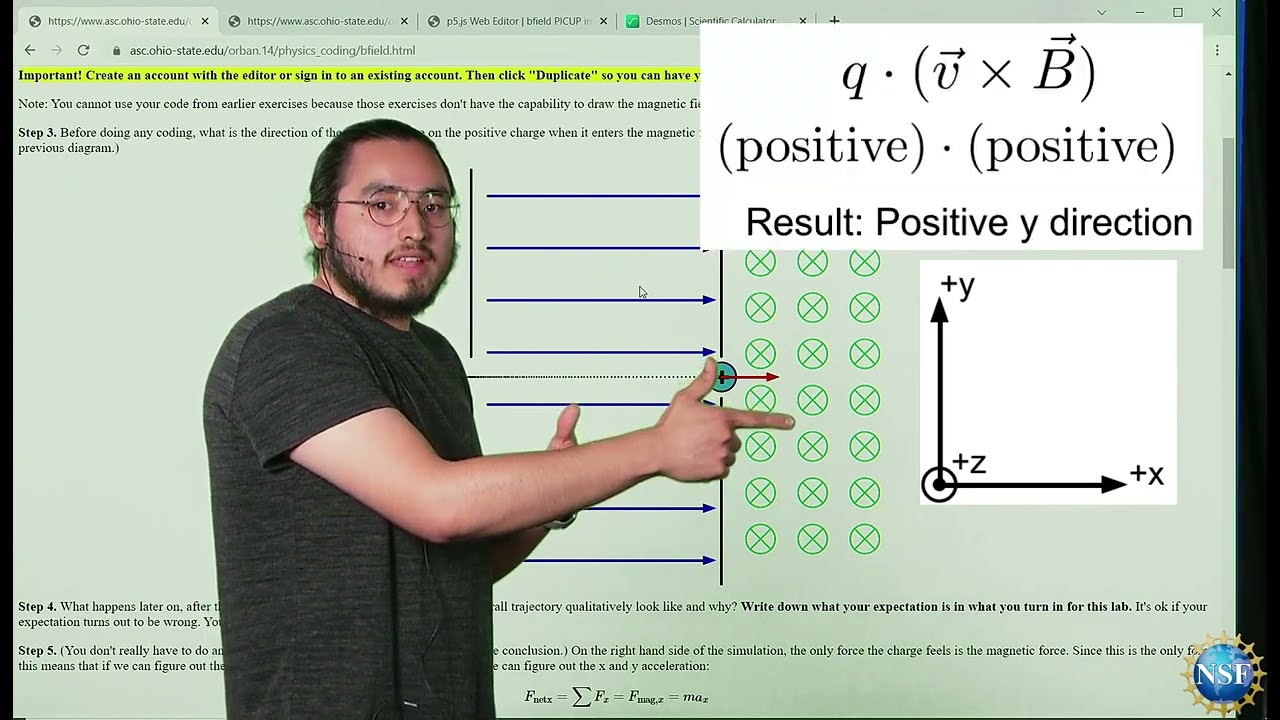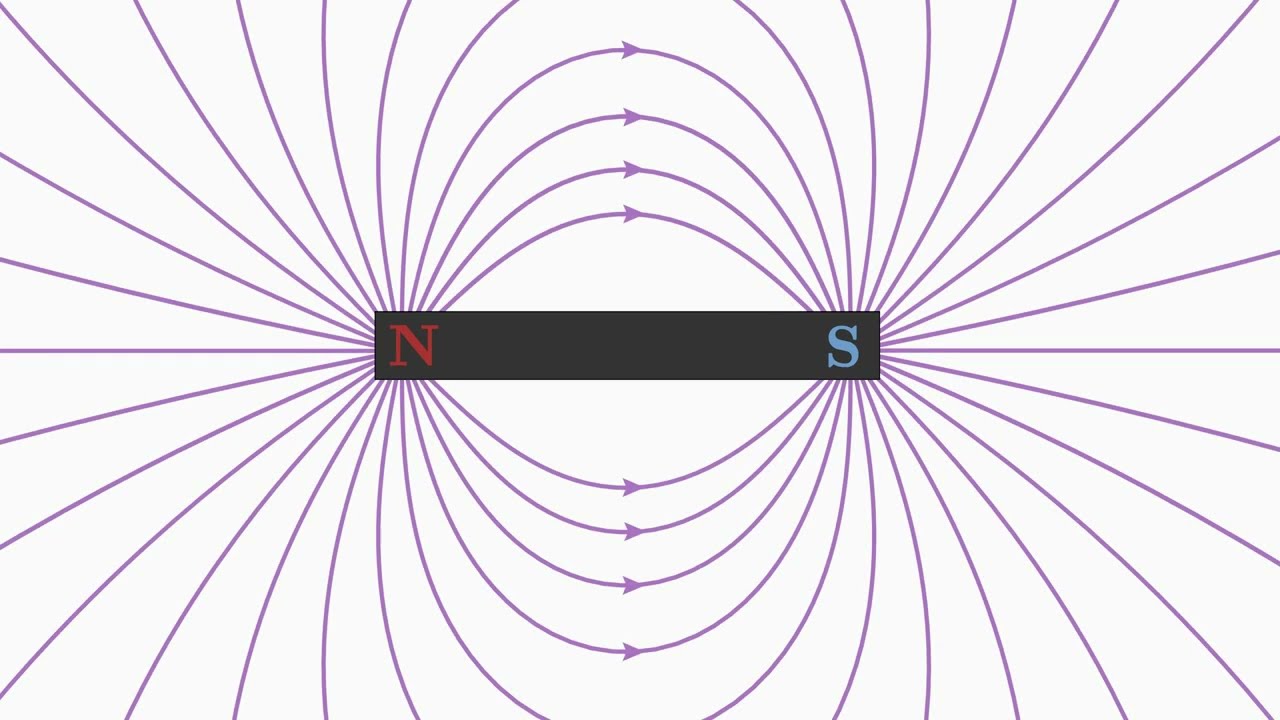
Title: From Magnetic Field to Electric Field: Understanding the Relationship
Magnetic and electric fields are fundamental concepts in physics. They are closely related, and understanding their relationship is essential for many areas of science and engineering. In this article, we will explore the connection between magnetic fields and electric fields, including how they can be converted from one to the other.
What is a Magnetic Field?

A magnetic field is a region in space where a magnetic force is exerted on charged particles. It is created by moving charges or magnets and is characterized by its strength and direction. The strength of the magnetic field is usually measured in units of Tesla (T).
Understanding the Magnetic Field Lines
Magnetic field lines describe the direction and strength of the magnetic field. They are always closed loops that form continuous paths around the magnet or current-carrying wire. The direction of the magnetic field lines is defined as the direction in which the north pole of a compass needle would point if placed in the magnetic field.
Generating a Magnetic Field
Magnetic fields are generated by moving charges, such as electrons in a wire or protons in an atom. When electrons move through a wire, they create a magnetic field around the wire. This phenomenon is used in many technologies, including electric motors and generators.
What is an Electric Field?

An electric field is a region in space where an electric force is exerted on charged particles. It is created by stationary charges (like protons) or moving charges (like electrons). The strength of the electric field is usually measured in units of volts per meter (V/m).
Understanding the Electric Field Lines
Electric field lines describe the direction and strength of the electric field. They are always continuous lines that start on positive charges and end on negative charges. The direction of the electric field lines is defined as the direction in which a positive test charge would move if placed in the electric field.
Generating an Electric Field
Electric fields are generated by stationary charges, such as protons in an atom. When a charged particle is placed near another charged particle, it creates an electric field around it.
Relationship Between Magnetic and Electric Fields
Faraday’s Law of Induction
Faraday’s law of induction describes how a changing magnetic field can create an electric field. According to the law, when a magnetic field changes with time, it induces an electric field in any nearby conductor. This phenomenon is used in many technologies, including transformers and generators.
Ampere’s Law
Ampere’s law describes how a current-carrying wire can create a magnetic field. According to the law, the magnetic field created by a current in a wire can be calculated using a mathematical formula. This phenomenon is used in many technologies, including electromagnets and electric motors.
Electromagnetic Waves
Electromagnetic waves are a combination of electric and magnetic fields that propagate through space. When an electric field changes with time, it creates a magnetic field, and vice versa. This phenomenon is used in many technologies, including radio communication and wireless networks.
Electromagnetic waves are a type of wave that consist of oscillating electric and magnetic fields, which propagate through space at the speed of light. These waves were first predicted by James Clerk Maxwell in the 19th century, and their existence was later confirmed by experiments conducted by Heinrich Hertz.
Electromagnetic waves have a wide range of applications in modern technology, including communication, medicine, and energy production. They can be produced by a variety of sources, such as radio transmitters, microwaves, and X-ray machines. These waves are also produced naturally by phenomena such as lightning and the sun.
The behavior of electromagnetic waves is described by Maxwell’s equations, which relate the electric and magnetic fields to each other and to the presence of electric charges and currents. These equations predict that electromagnetic waves always travel at the speed of light, which is approximately 299,792,458 meters per second in a vacuum. This means that electromagnetic waves can travel vast distances across the universe, allowing us to observe distant stars and galaxies.
Electromagnetic waves have a wide range of frequencies, which determines their properties and behavior. The frequency of an electromagnetic wave is related to its energy and wavelength, with higher frequencies corresponding to shorter wavelengths and more energetic waves. The electromagnetic spectrum includes a range of frequencies from radio waves, which have the lowest frequencies and longest wavelengths, to gamma rays, which have the highest frequencies and shortest wavelengths.
Different types of electromagnetic waves have different uses and applications. For example, radio waves are used for communication over long distances, while microwaves are used for cooking food and cell phone signals. Infrared radiation is used for remote sensing and thermal imaging, while visible light is used for photography and illumination. X-rays and gamma rays are used for medical imaging and cancer treatment.
Despite their many useful applications, electromagnetic waves can also be harmful to living organisms. High-energy waves such as X-rays and gamma rays can damage cells and cause cancer, while exposure to radio waves and microwaves can generate heat in tissues. It is therefore important to use electromagnetic waves safely and responsibly, and to limit exposure to harmful levels of radiation.
In summary, electromagnetic waves are a fundamental aspect of the universe that have numerous applications in modern technology and science. They are described by complex mathematical equations, and their behavior is determined by their frequency, which ranges from radio waves to gamma rays. While electromagnetic waves have many benefits, it is also important to use them safely and responsibly to avoid harm to living organisms.
Converting Magnetic Field to Electric Field
Electromagnetic Induction
Electromagnetic induction is the process of creating an electric current in a conductor by exposing it to a changing magnetic field. This phenomenon is used in many technologies, including power generation and metal detection.
Hall Effect
The Hall effect is the creation of a voltage across a conductor when a magnetic field is applied perpendicular to the current flow. This phenomenon is used in many technologies, including magnetic sensors and current measurement.
Conclusion
In conclusion, magnetic fields and electric fields are closely related concepts in physics. They can be converted from one to the other through various phenomena, including electromagnetic induction and the Hall effect. Understanding the relationship between these fields is essential for many areas of science and engineering, including electrical engineering, magnetism, and electromagnetism.


